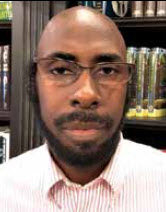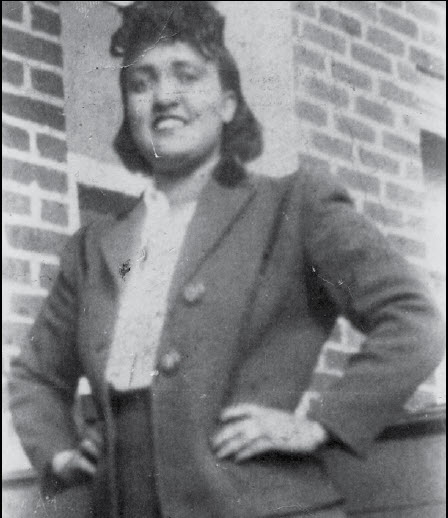 By: Eric Betts
By: Eric Betts
Who was Henrietta Lacks? She was a poor female tobacco sharecropper from the 1950s who was stricken with cervical cancer. Her cells were secretly removed by researchers during her cancer surgery. Those cells (known as HeLa, taken from her name) launched a new renaissance in medicine and in the biomedical corporations. Neither she nor her family were informed of the significance of Henrietta’s cells and the role they played in medicine. The Lacks only discovered their mother’s contribution to medicine and science after a chance encounter with a laboratory worker in 1973. Henrietta is considered the most important woman of modern medicine. According to Rebecca Skloot, author of The Immortal Life of Henrietta Lacks, the cells were used for “first space missions to study cells in zero gravity, polio vaccine, chemotherapy, cloning, gene mapping, drugs for herpes, leukemia, hemophilia, study for Parkinson’s disease, appendicitis, mosquito mating, standard laboratory workhorse, and nuclear testing.” Henrietta was only five feet tall, yet if one were to pile up all the HeLa cells that were ever grown, they would weigh fifty-million metric tons, according to Skloot.
George Guy was a cell researcher who worked in the labs at Johns Hopkins. It was his mission as a researcher to find a substance which would house cells which would keep them alive and never die. He worked relentlessly to find a way to immortalize cells. He believed that this would help to cure many diseases. There were also women who had cervical cancer who were often mistakenly diagnosed with cervical infections. This would often prove deadly as the cancer was allowed to progress without treatment. It was at this point in medical history that Henrietta arrived at Johns Hopkins. While being treated for cervical cancer, her physicians, led by world-renowned gynecologist Richard W. TeLinde, collected sample tissue from her cervix as she remained unconscious before them.
The cells were delivered to George Gey’s lab at Hopkins and placed in cell culture. The next day the cells did not die as cells normally would, but they were dividing and regenerating at an astronomical rate. The cells continued to live and reproduce at what the researchers called a “mythological intensity.” As incredible as this “miracle” had been, the question must be asked: How was it that TeLinde and Gey did not see the need to get permission from Henrietta or her family in order to do this research? Why did they not tell her or the family after they first witnessed the miracle? It was in August of 1951 when the doctors took a few more cells from Henrietta’s cervix at the request of George Gey to see if the second batch would grow as the first, but they died immediately. Still, they did not tell her or the family the great breakthrough in science and medicine that had been achieved, neither was permission requested.
Gey wanted samples from Henrietta after the death of Henrietta from as many organs as possible to see if they would grow like HeLa. While the Medical Code of Ethics did not prevent taking tissue from patient while living, it was unlawful to remove tissue from a dead person without permission. An autopsy permission form was signed in order to cut into body of Henrietta in the colored freezer. Additionally, as Henrietta’s cells were already making an impact in the world of science, this news was not passed along to the widower.
Henrietta’s cell production was a miraculous intervention in a time of one of the greatest epidemics in the history of the United States. In 1951, the polio epidemic had made its mark. Schools were closed. The public was desperate for a vaccine, and there was widespread panic. Henrietta’s cells helped to create the vaccine that save thousands of lives during this epidemic. The federal government was in great need to mass produce these cells so that lives would continue to be saved. Annual donations of $50 million to the National Foundation for Infantile Paralysis were given for the HeLa project. The solution to the crisis was found by infecting HeLa with polio.
As the Henrietta Lack’s cells continued to prove useful, a large biomedical company called Microbiological Associates made hundreds of millions of dollars with government money. Biomedical companies continue to make hundreds of millions of dollars from the HeLa cell line today.
For decades, the Lacks family continued to be in the dark about the many breakthroughs Henrietta’s cells had made. The name identity of the cells was kept secret all that time. Pseudo-names were often given in medical journals in association with the cells. It was finally and officially revealed in 1971.
As recently as October 2021, the grandchildren of Mrs. Lacks filed a lawsuit against a major biomedical corporation for unjust enrichment and non-consensual use of her cells. Seventy years after the death of Henrietta Lacks, the Lacks family believes that they will soon achieve justice on behalf of their historic family member. Sidelined for decades, exploited, and deceived, they are symbols of perseverance in the struggle for medical ethics and human dignity. As Martin Luther King Jr. once said: “Whatever affects one directly affects all of us indirectly.” Should the Lacks family prevail, it will be a victory not only for them but for human dignity itself.
By: Eric Betts
Assistant Director, Curtis Coleman Center for Religious Studies and Ethics at Athens State University






